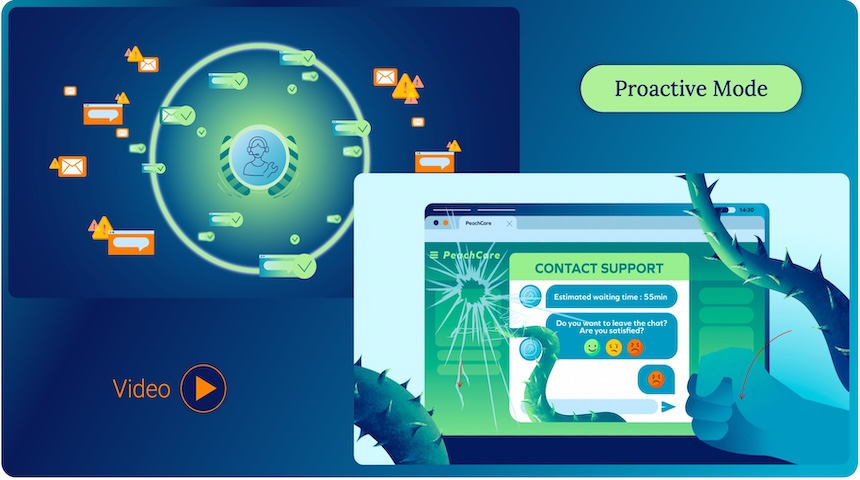In today’s hybrid working environment, the software as a service (SaaS) apps employees use, and security service edge (SSE) solutions organizations use to secure it are dynamic and distributed. You sometimes need to deal with complex user experience issues without clear visibility into where they originate. Let’s take a look at some increasingly common situations and explore some proven ways IT leaders are regaining control.
Visibility is key
The landscape for IT network and security teams has become considerably more complex. Previously, these teams enjoyed clear visibility and control over their infrastructure and applications, operating within a predictable work environment and security perimeter. Identifying and resolving problems was straightforward. However, the advent of cloud technology, remote work, and SaaS has radically altered the scenario. Now, users, devices, hosts, and applications are extensively distributed, all interconnected through internet-based networks. What was once a controlled environment has transformed into a dynamic, complex, and opaque ”IT jungle.”
To regain control, it is essential to embrace SSE, optimize internet and SD-WAN connectivity, and streamline processes and collaboration. Traditional monitoring tools struggle in this context, leading to blindspots that put security and performance at risk. Regaining control starts by regaining visibility. Transparent insight from device to app–inside and outside SSE–makes it easier to understand and optimize complex, end-to-end infrastructure. It’s a cornerstone to delivering a robust digital experience for users, wherever they work. Digital experience monitoring also plays a pivotal role in optimizing security and performance, and provides a path to simplicity and enhanced productivity.
Detect to diagnose
Digital experience monitoring is crucial for delivering security and performance across complex, dynamic workforces and infrastructures. It illuminates the end-to-end digital estate, revealing the performance of every domain, user, network segment, and application. Transparency into security performance enables immediate identification of problems originating within or beyond the security cloud platform, a feature that standalone monitoring solutions can’t reveal.
With everything out in the open, security, network, and IT operations can join forces to resolve issues impacting user experience, performance, and productivity. Visibility changes finger-pointing to pinpointing, and guesswork to teamwork. At the same time, digital experience monitoring needs to be simple, to make things simple. Key requirements include proactive capabilities, such as:
- Zero touch SaaS and web app monitoring
- Actionable insight for rapid root cause analysis, and to prioritize action
- Role-based reporting to facilitate–or eliminate–multi-team collaboration
- Clear evidence to hold vendors accountable
- Digital experience visibility, in the context of each user, their location and context
Proactive Mode: Activated
With MTTR split nearly 50-50 between diagnosing and fixing issues, moving from monitoring digital experience to effectively managing it delivers the greatest gains to IT. Netskope provides a path to automating visibility and remediation with proactive digital experience management. Netskope’s P-DEM solution provides 360° visibility to fully understand user experience and the origin of issues that impact it. It’s designed to eliminate hours spent across IT teams sometimes focused more on proving innocence than identifying the root cause of issues.
However, diagnosing issues is only half the battle. In today’s complex IT environment, where 20% of problems can’t be resolved by overloaded help desk teams, we need to automate resolution to get things fixed. P-DEM relieves pressure on operations by aligning insight with actions taken by the Netskope client and the NewEdge cloud to resolve issues quickly, often before users feel the impact. This results in transformative gains in IT efficiency, allowing teams to refocus on critical projects while users and businesses benefit from automated security and performance.
Trust in Performance
Netskope Proactive Digital Experience Management (P-DEM) is foundational to a modern SSEstrategy, playing a key role in bridging the gap between current IT realities and strategic goals. It unlocks the full potential of modern apps, SSE, and work from anywhere strategies by ensuring IT organizations are fully informed and able to effectively resolve–and proactively prevent–user experience issues. P-DEM’s enhanced insight into digital infrastructure also supports effective decision-making and strategic planning, SSE and SaaS migration, positioning P-DEM as a vital tool for navigating today’s complex digital landscapes.
Netskope’s implementation of P-DEM emphasizes automation, security, and speed, key elements in cultivating a digitally empowered workforce. By automating routine tasks and optimizing responses to common challenges, P-DEM keeps your IT teams focused on high-value activities, while boosting employee productivity and business continuity. It also helps you master digital experience with secure and efficient operations that advance business goals and maximize IT investments, effectively moving the needle forward in the digital era.




 Retour
Retour 



















 Lire le blog
Lire le blog